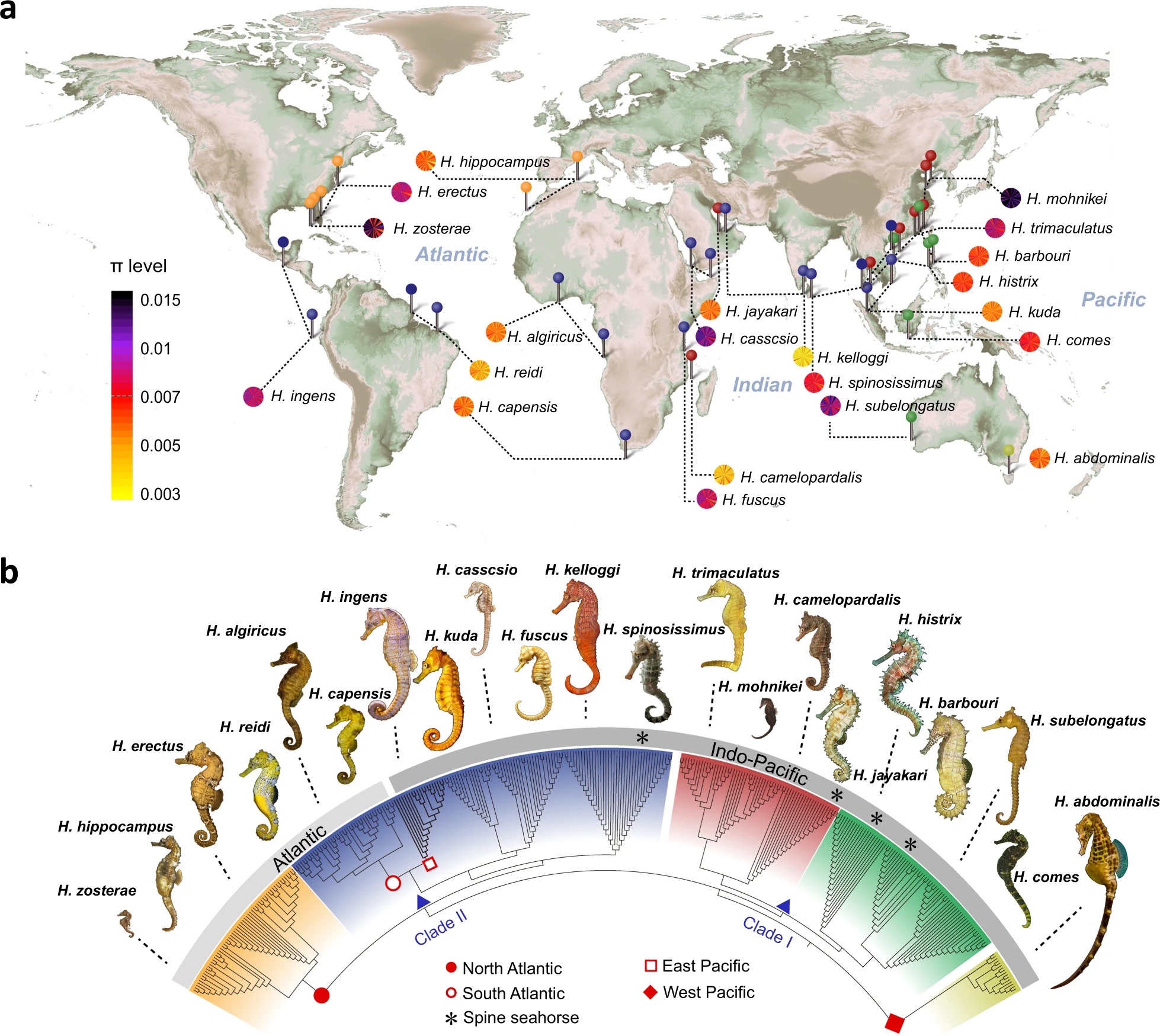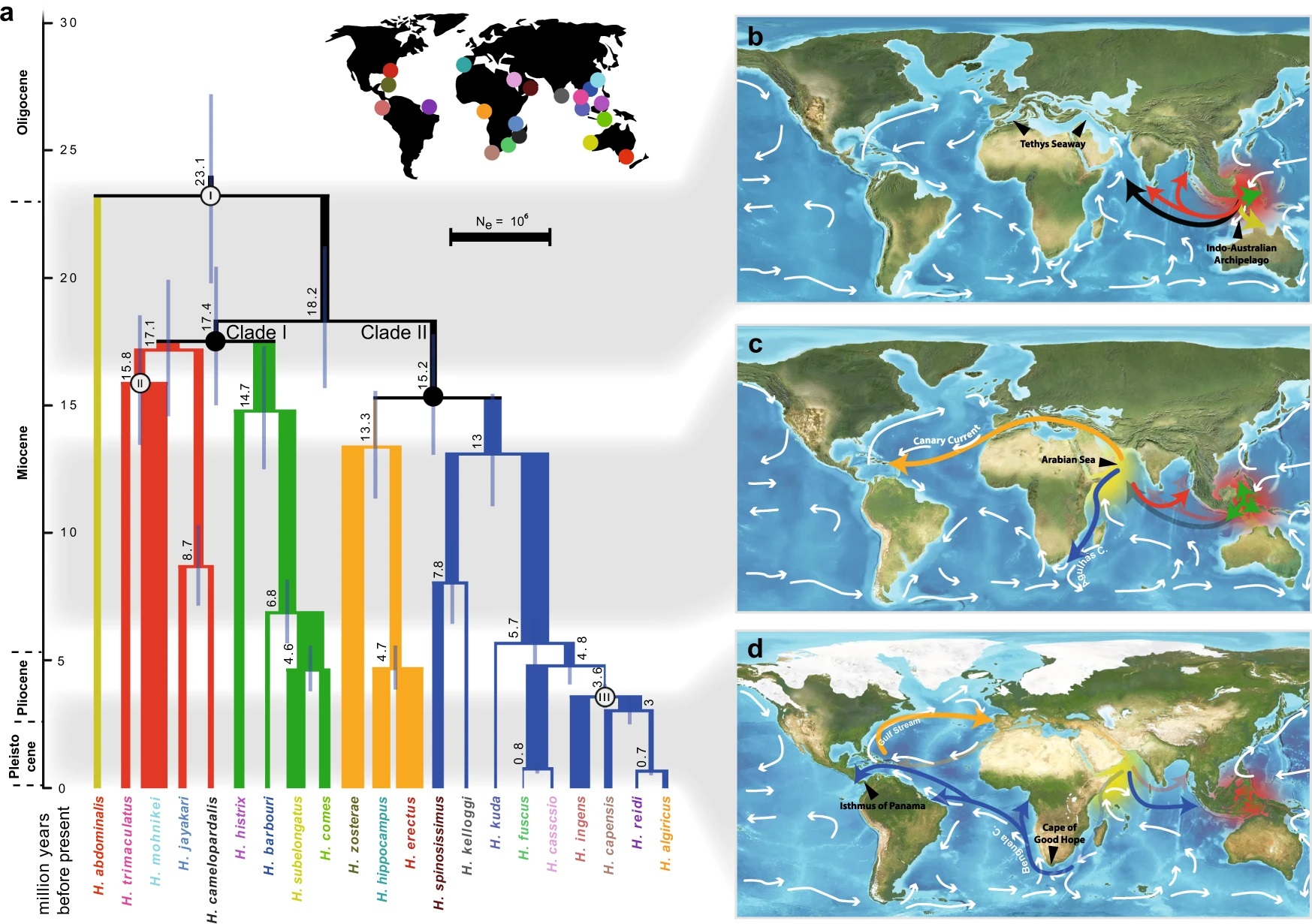
Researchers led by Prof. LIN Qiang from the South China Sea Institute of Oceanology (SCSIO) of the Chinese Academy of Sciences and their collaborators from home and abroad unveiled the global dispersal routes and convergent genetic adaptations in seahorse evolution.
The study was published in Nature Communications on Feb. 17.
Seahorses have a circum-global distribution in tropical to temperate coastal waters. They require specific habitats, such as seagrass, kelp or coral reefs, lack pelvic and caudal fins, and give birth to directly developed offspring without pronounced pelagic larval stage.
The researchers collected 358 specimens from 21 Hippocampus species with diverse global distribution patterns, representing the major lineages of the genus, and first demonstrated the substantial genetic differentiation between the North and South Atlantic Ocean biome.
Geographic diversification model based on species tree and divergence time revealed that the common ancestor of all seahorses originated in Indo-Australian Archipelago ~20-25 Ma (million years ago).
Seahorses, despite their extremely sedentary life-style, exhibited astonishingly, long-distance dispersal along routes aligned with ocean currents. In particular, seahorses colonized the Atlantic Ocean twice from the West Indian Ocean independently: one of them facilitated by the last opening of the East Tethys Seaway and the other by passing the Cape of Good Hope. Finally, is the colonization of the East Pacific Ocean through the Panama seaway before its closure.
Convergent evolution of adaptive traits, such as repeatedly evolved protective dermal spines, suggested that developmental-genetic pathways were recruited several times independently and presumably in response to predation pressure.
Both the unorthodox means of dispersal by rafting along oceanic currents and the ability to rapidly adapt to new environments and respond to changed selection regimes may account for the evolutionary success seahorses had while diversifying globally.
This study provides new insights into the mechanism underlying evolutionary success of diversification of marine organisms.

Fig. 1 Genetic diversity and phylogenetic relationships of 358 seahorse specimens (Image by SCSIO)

Fig. 2 Colonization and demographic history of seahorses (Image by SCSIO)

86-10-68597521 (day)
86-10-68597289 (night)

52 Sanlihe Rd., Xicheng District,
Beijing, China (100864)

